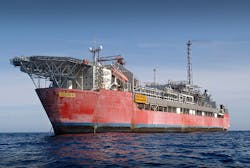Vår Energi adds $1.2 billion to Balder X development cost, delays first oil
Vår Energi ASA has increased the cost estimate for Balder X development by $1.2 billion (gross) and pushed first oil to third-quarter 2024 from late-2023, citing increased workscope and continued impacts from global supply chain challenges and COVID-19, the company said Sept. 19. The 350,000 boe/d production target by end 2025 is unaffected.
The new total estimated gross project cost is $4.3 billion.
Balder X, on the Norwegian Continental Shelf comprising Balder Future and Ringhorne Phase IV drilling projects, is set to extend production from Balder Hub to 2045 and support development of new nearby discoveries by upgrading existing infrastructure and drilling new wells. The new cost estimate and schedule change are mainly related to Balder Future, with increased scope and additional engineering and construction work on the Jotun FPSO lifetime extension, the company said.
The revision will not impact the 2022 CAPEX guidance and the company maintains its dividend guidance for 2022 and long-term dividend policy, it said.
Balder X is expected to unlock an estimated 143 million bbl of recoverable reserves and to increase Balder Hub gross production to over 70,000 boe/d at peak, said Torger Rød, chief executive officer.
Once the Jotun FPSO is re-installed and connected to Balder Future production wells, it will tie in the new Ringhorne wells. Furthermore, 2021’s King and Prince discoveries, estimated to hold an additional 60-135 million bbl of oil, are being considered for tie-in to the FPSO, Rød said (OGJ Online, June, 21, 2021).
About the Author
Alex Procyk
Upstream Editor
Alex Procyk is Upstream Editor at Oil & Gas Journal. He has also served as a principal technical professional at Halliburton and as a completion engineer at ConocoPhillips. He holds a BS in chemistry (1987) from Kent State University and a PhD in chemistry (1992) from Carnegie Mellon University. He is a member of the Society of Petroleum Engineers (SPE).

